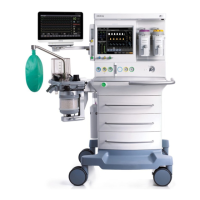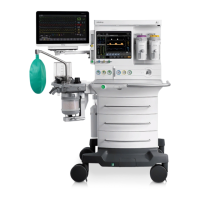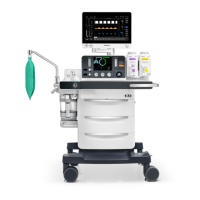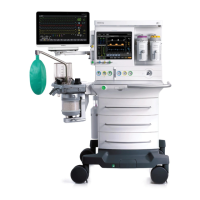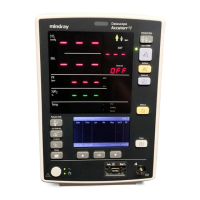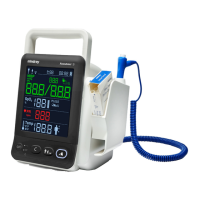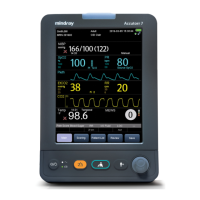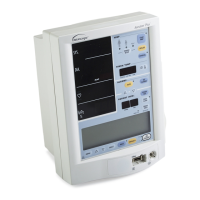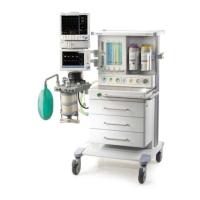6-27
6.3.5 Pressure Calibration (Service)
6.3.5.1 Principles
In pressure calibration (service), the anesthesia machine calibration device (for example, VT900,
VT650, TSI Certifier) specified by the manufacturer needs to be used to calibrate the PEEP valve,
Paw sensor, and PEEP pressure sensor. The calibration principles are as follows: The anesthesia
machine calibration device can communicate with the VCM, which controls the tight closing of
the inspiratory valve. The VCM opens the PEEP valve based on a certain DA value to make the
circuit pressure reach a certain value. The Paw sensor, PEEP pressure sensor, and anesthesia
machine calibration device collect the circuit pressure. The calibration device sends the collected
pressure to the VCM. The VCM uses the pressure measured by the calibration device and AD
values collected by the pressure sensors as the data of one calibration point for the pressure
sensors, and uses the pressure measured by the calibration device and DA value of the PEEP
valve as the data of one calibration point for the PEEP valve. The VCM controls the PEEP valve
to change the DA value to obtain calibration data under a series of pressures, forming a pressure
calibration data table. The gas pressure should be in the range from 0 cmH2O to 100 cmH2O
when the VCM opens the PEEP valve.
Figure 1 Schematic diagram of pressure calibration (service)
Flow
Inspiratory valve
Ventilator flow
sensor
PEEP valve
PEEP safety valve
P
PEEP sensor
Pneumatic resistor
Calibration device
P
Paw sensor
6.3.5.2 Precautions
Pressure calibration (service) needs to be performed if the sensor adapter board,
VCM, or expiratory valve assembly is replaced.
Pressure calibration (service) needs to be performed if the measured value of the
built-in pressure sensor deviates from that of the standard pressure measuring
device by 5% or 2 cmH2O, whichever is larger .
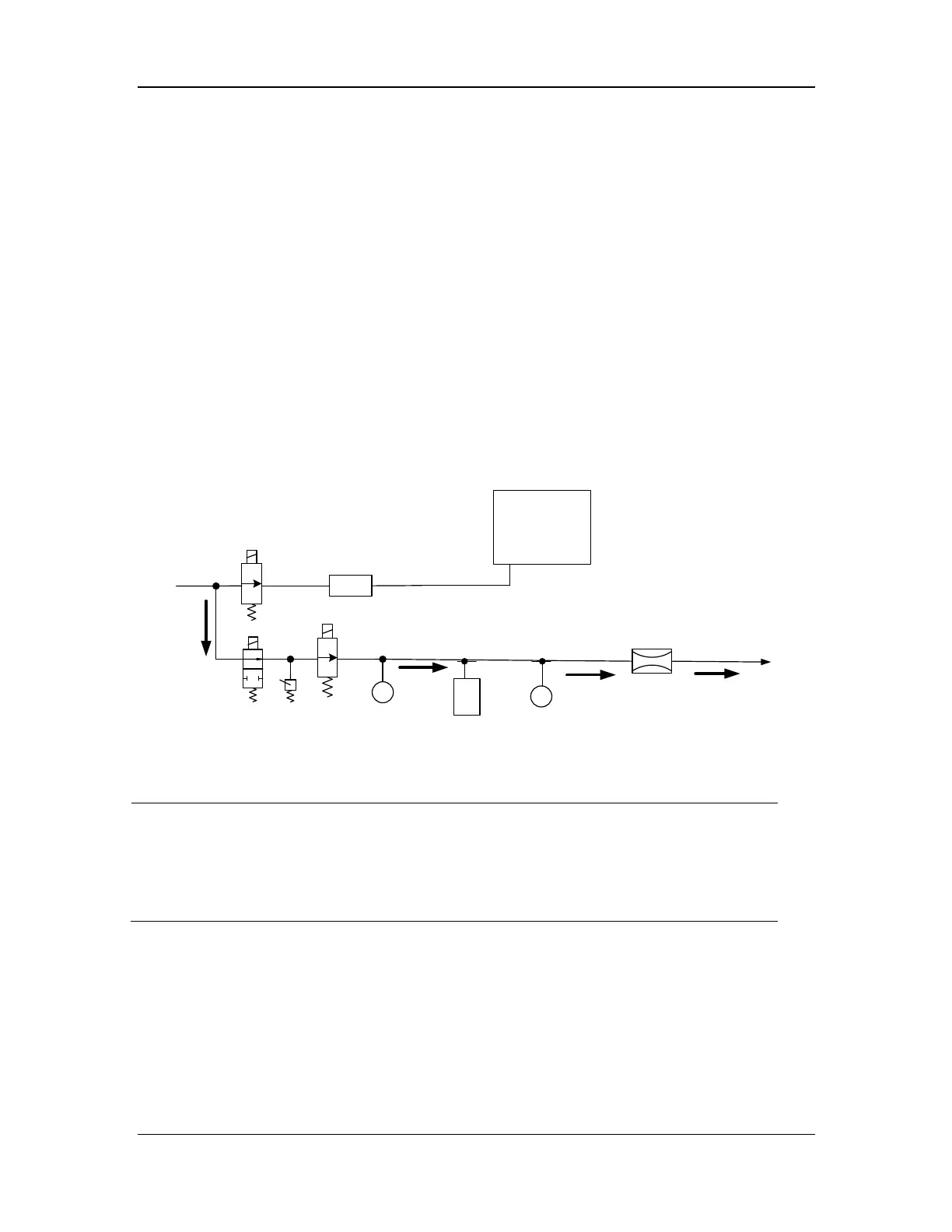